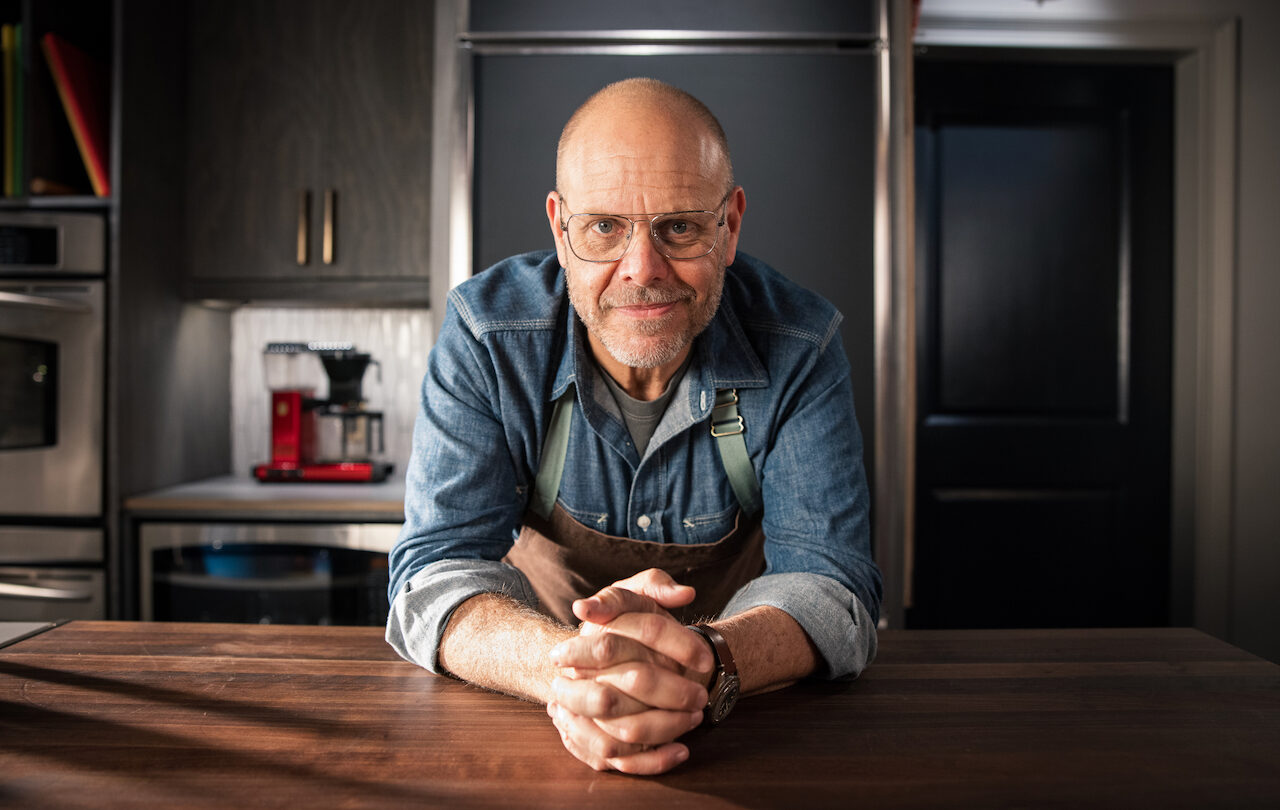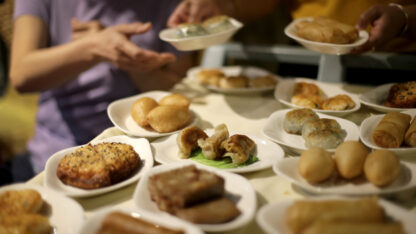Alton Brown has been touring major cities across the US promoting his new cookbook, and he saved the best for last — his hometown of Atlanta. On Wednesday, May 11, the James Beard and Peabody Award-winning chef and host of “Good Eats” will give a talk and book signing at Variety Playhouse for “Good Eats 4: The Final Years.” Brown joined “City Lights” host Lois Reitzes via Zoom to talk about his legacy of curating food experiences for his loyal viewership.
Interview highlights:
Going deep into European food history:
“This isn’t just in regards to latkes, but it’s also why tomatoes ended up in Italy — the entire experience, or what happened culinarily in Europe with the rise of the Spanish Inquisition, is that Spain literally got squeezed like a tube of toothpaste, and a lot of toothpaste came out,” said Brown. “Of course, the Jewish diaspora, which is such a fascinating history of this massive population moving across North Africa up across places like Sicily … into Italy, up into Poland, and figuring out all of the changes that were made in the foods that moved along because of that course is really pretty fascinating.”
“We ended up having potato latkes mostly because potatoes were so gosh darn available later on in Poland through the later part of the 17th century and 18th century. And so they adapted all along the way, and of course, there was a strong Jewish population in Sicily and, of course, across all of North Africa, which is why we have things like shakshuka and the ingredients that are there. So I am fascinated by the whole European and Eastern European experience that resulted from the cultural movements due to the Spanish Inquisition.”
The key to cooking is the technique:
“When I started making the show … I was like so many other young culinary people, very focused on ingredients,” Brown recalled. “‘You can’t make a good Southern biscuit without white lily flower because you got to have this protein content,’ and then over the years, I’ve come to realize, actually, technique, the actual way you handle ingredients is in most cases, more important than specifics about the ingredient itself.”
“Now, the reverse-sear steak … My very first recipe or ‘application’ for ‘Good Eats’ was a steak that was seared in a very, very, very, very hot pan and then finished in the oven. It makes a really great steak. It also creates vast amounts of smoke, which most people have a really hard time getting rid of,” he explained. “The thing about a reverse-sear is that by cooking a steak at a very low temperature over a longer period of time, and then searing it before you serve, it gives you not only a steak that doesn’t need to rest as long but a steak that also produces a whole lot less smoke.”
The quest for perfect brownies:
“I have struggled with brownies. And I think that the reason that I struggle with brownies is because I try to come up with a brownie that’s like everything everybody wants out of a brownie, and the truth is everybody wants something different out of a brownie. For instance, me personally, I like brownies that are all kind of cracked and look like a black version of the Bonneville Salt Flats on top,” Brown said. “I like the corners, and I like it just chewy as heck and a little bit overcooked. I suspect that’s because that was the brownie of my youth.”
“I don’t want to eat a brownie that reminds me of a cake, right? I want a brownie that only reminds me of a brownie. The revolution in this particular application, I have to give the nod to my mother, who was making my brownies one day, and her dog had to go out. She ended up taking the brownies out of the oven, but instead of throwing them away, when she got back, she just put them back in the oven, and she said they were perfect … Actually, the texture and, to my mind, the flavor of a brownie can be greatly affected by cooking in two stages with a resting stage in the middle.”
Alton Brown will appear at the Variety Playhouse on May 11 for his talk and book signing of “Good Eats 4: The Final Years.” Tickets are available here.









